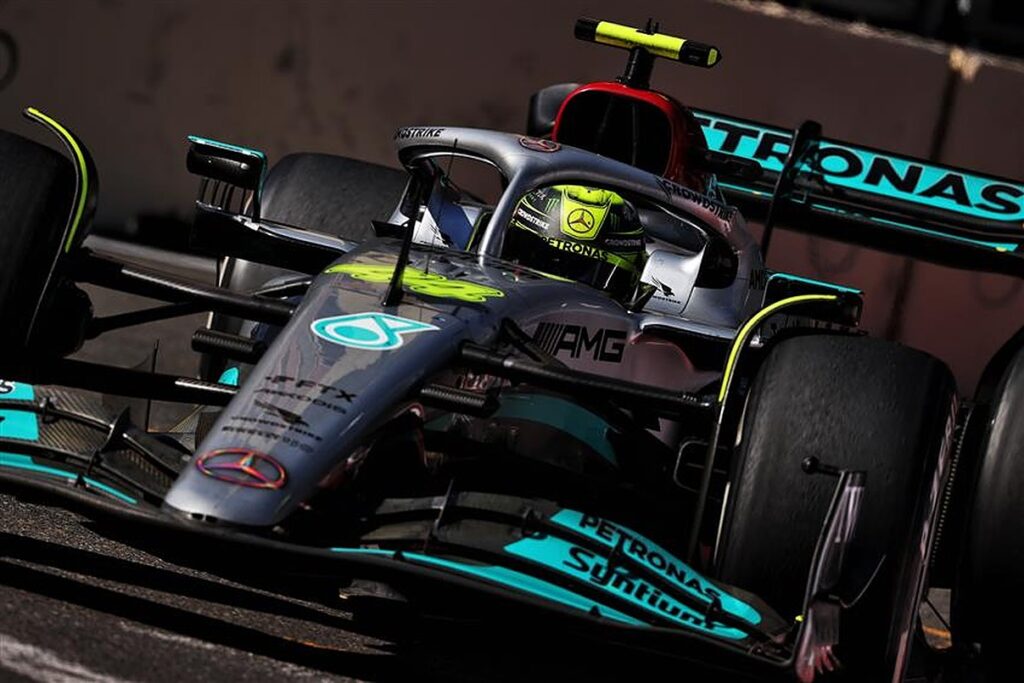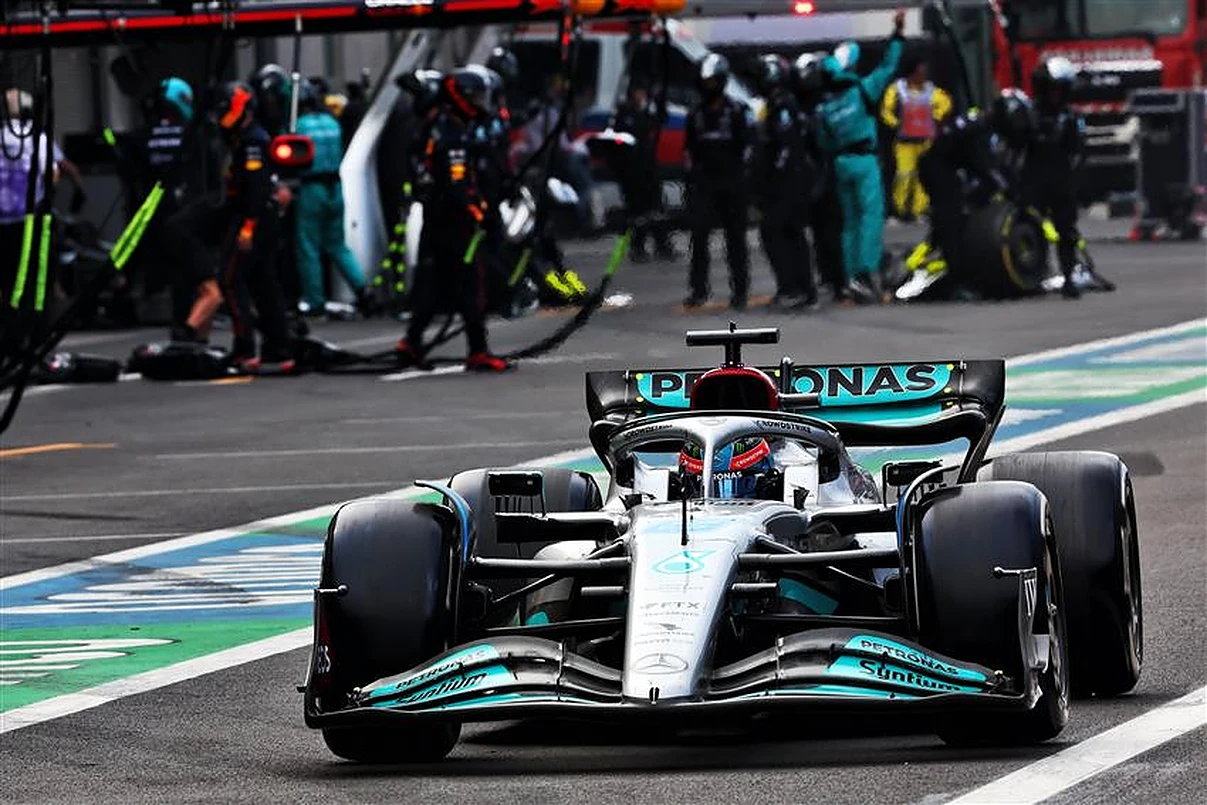Mercedes technical director Mike Elliot has revealed that the Silver Arrows “knew” ahead of the 2022 season that bouncing would be present in the new aerodynamic era of Formula 1; however, the Germans had no idea of “how serious” their porpoising issues would be.
2022 was traumatic for Mercedes, with the Silver Arrows having made somewhat of a mess of the new aerodynamic regulations that were introduced for last season.
The Brackley-based team designed a car which suffered from unbelievable porpoising, to the extent where Lewis Hamilton complained of severe spinal pain in Azerbaijan.
The porpoising phenomena was truly astonishing to watch, with the aggression of it being clearly visible.

READ: Ex-F1 champion making Mercedes ‘assumption’ for 2023
Mercedes were affected by the issue more than any other team, mostly due to their revolutionary ‘zero sidepods’.
It took the Silver Arrows half a year to solve the problem, with the phenomena having been “very difficult to replicate”.
“We knew that the ground effect cars of the past had this phenomenon and we talked about it at the design stage as well,” Elliott told Auto Motor und Sport.
“We didn’t expect there to be no problems at all, but none of the simulations gave any indication of how serious the problem would be.
“I think everyone has had that experience. It is very difficult to replicate the problem in the wind tunnel and it would be very expensive to model it in CFD simulation.
“That’s why we didn’t use the resources allowed by the regulations in the CFD to simulate bouncing.”
The Germans did eventually solve the issue and managed to claim a race win towards the end of the season, after they’d closed the gap to Red Bull and Ferrari.
Mercedes weren’t the only team to suffer from porpoising, with a number of drivers having called upon the FIA to intervene due to it being a safety concern.
The governing body did just that, by announcing that for 2023 floor edges must be raised by 15mm, something which should eradicate the bouncing issue.
Some of the smaller teams have complained, though, that raising their floor edges will have an impact on their performance; however, Elliot doesn’t “think it will make much of a difference.”
“We will all find a way around it and adapt,” Elliot said.
“It has not changed the starting point of our development.
“The downforce loss depends on the ground clearance you are driving with. It can be high, but also very small.”
Mercedes have been working during the winter on solving the issues that caused their aerodynamic troubles, with the belief being that they now understand what they did wrong, and how it can be fixed.
The team have therefore got different goals for 2023, with the expectation being that they will return to the front this season with the W14.
READ: Photo of 2022 Haas F1 car without halo emerges
“Our goals will be different than 2022,” added Elliot.
“Some of the problems stemmed from the aerodynamic goals we had set.
“We’ve already made changes and there will be more. We hope that’s enough to be up front again in 2023.”

